If you’re as obsessed with decorative stitches as we are, you’ll love this tutorial on how to sew a Double-Piped French Seam.
It’s unique, beautiful and – best of all – fairly simple to execute. If you can already sew a French seam and create piping, you’re more than half way there.
The Double-Piped French Seam is just those two skills combined in a way most trimmers haven’t really thought about.
Here’s how you do it:
1. Cut strips of material
You’ll need two strips of material to make your double piping.
Choose whichever fabric and color you like, and cut strips measuring 1.5″ wide by the length of your panel.
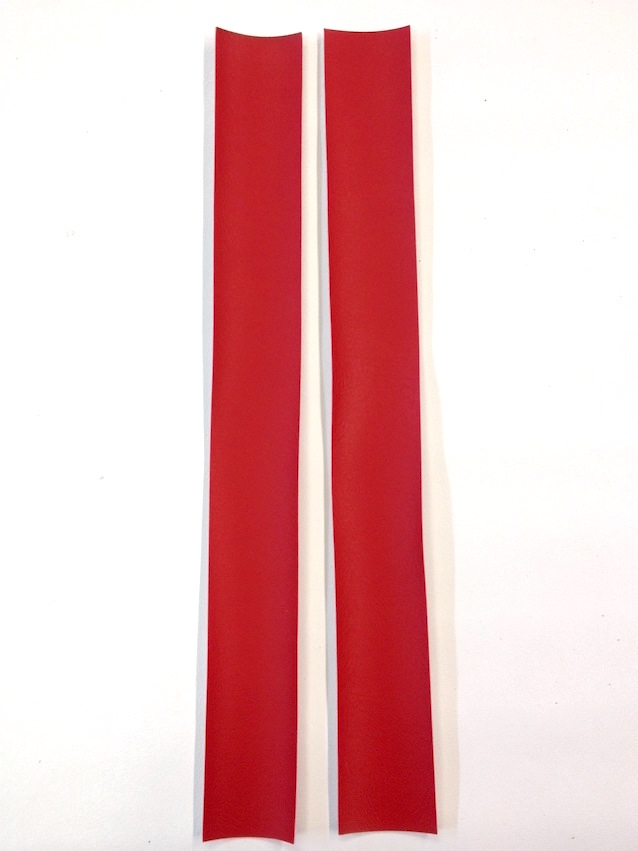
2. Stitch the material together
Place the strips of material on top of each other so that their faces touch and sew a seam down the center.
Tip: To ensure a perfect seam, draw a line in the center of the upper strip and sew over top.
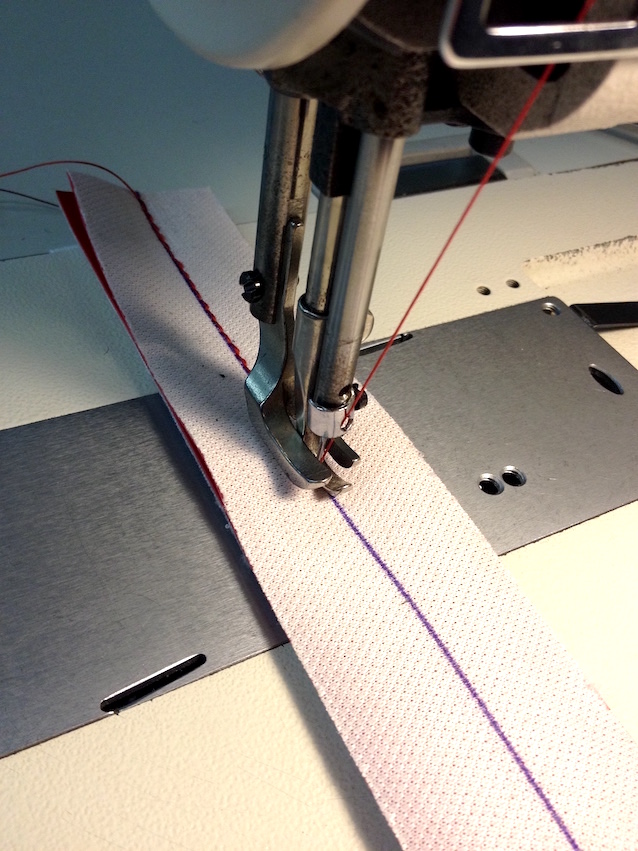
3. Fold the material over
Turn the sewn strips on their side and fold the materials along the seam.
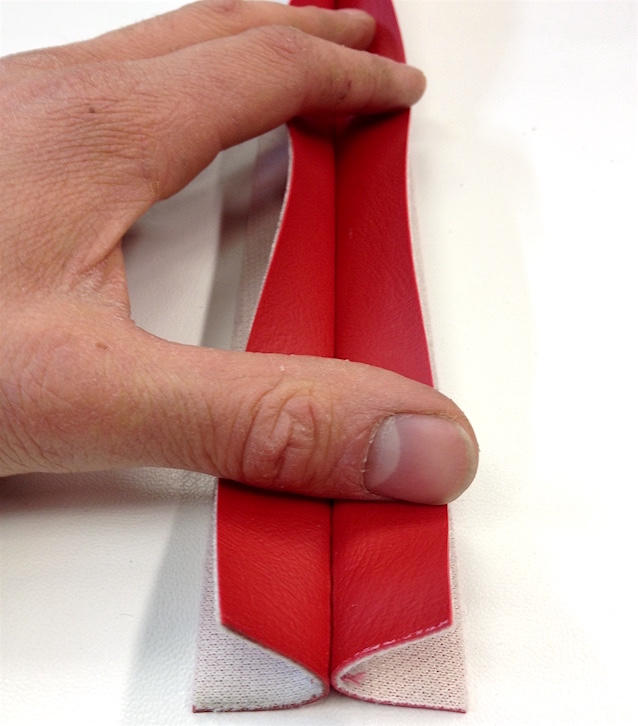
4. Insert welt piping
Insert welt piping into each fold and sew just like you would to create ordinary piping.
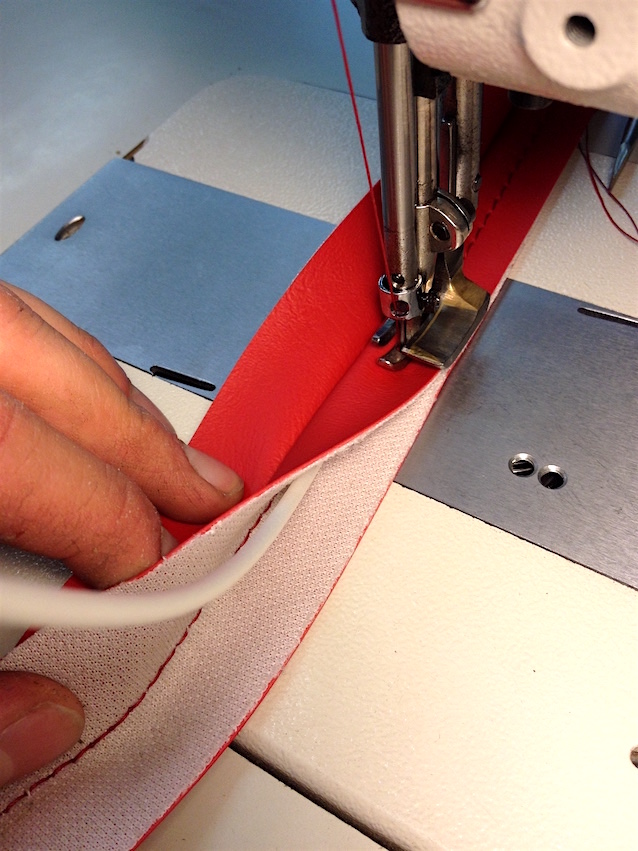
The double piping should look like this:
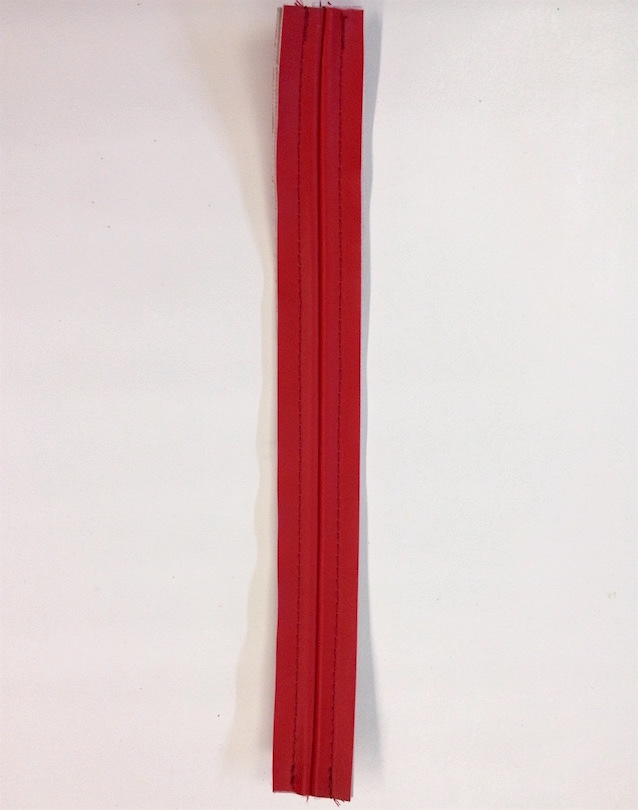
5. Attach the double piping to your panel
Using a cord foot on your sewing machine, sew your panels onto both sides of the piping.
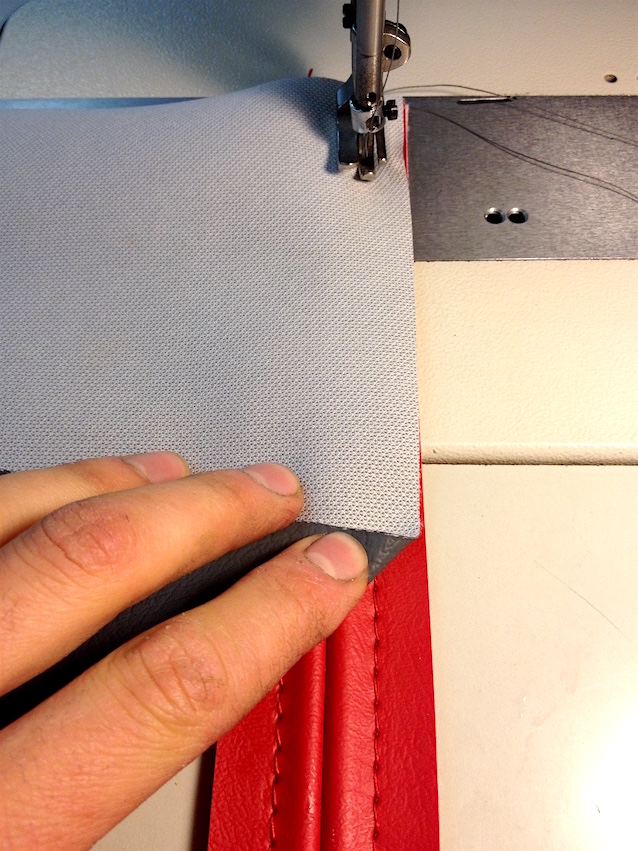
6. Don’t forget your top stitch
Lay down a top stitch over both sides of the piping.
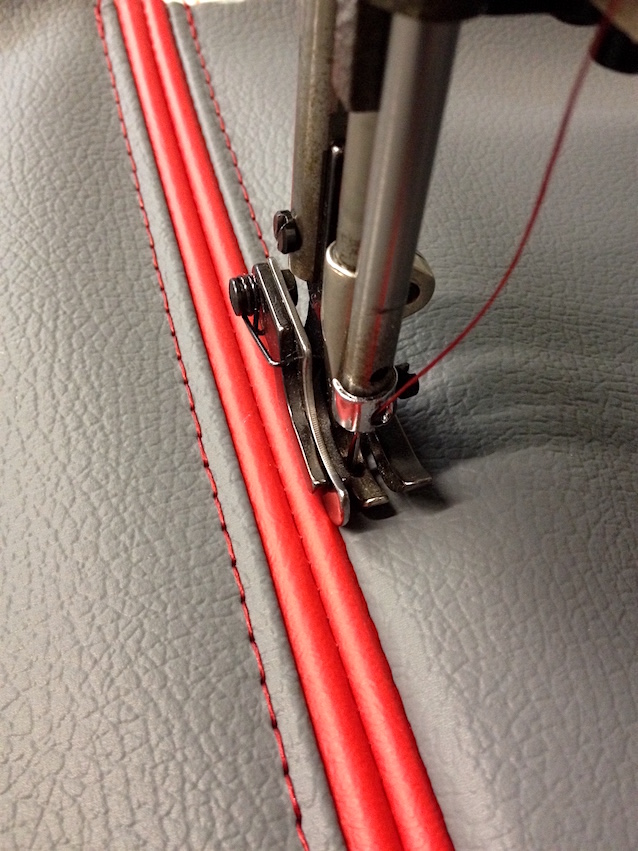
Here’s the finished product…
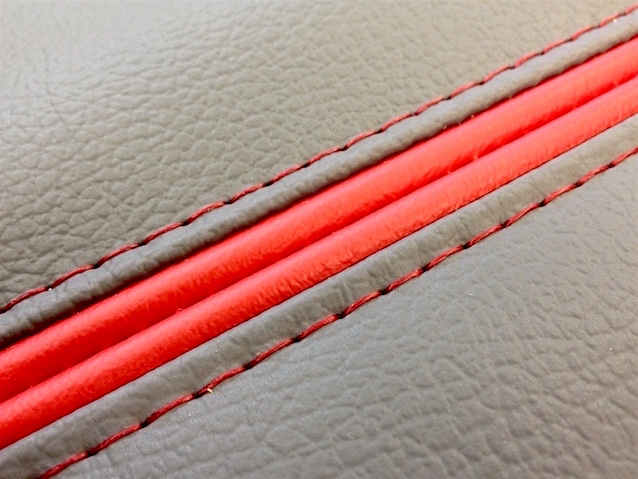
And there you have it folks, a Double-Piped French Seam!
The great thing about the Double-Piped French Seam is that it affords you the ability to enhance your project by adding contrasting colors and textures. The piping, panels and thread colors can be mixed and matched in any combination you like.
Keep in mind that the Double-Piped French Seam works best in straight-line applications. Attempting a curved version of the seam can be quite challenging. For that reason, and because of its excessive selvage, this seam is not well suited for the bolsters of a seat, but rather on the insert panels where it will lay properly and look its best.
Let’s see what you got!
Now that you know how to sew a Double-Piped French Seam, give it a try! Post your photos on Instagram and tag us or use the hashtag #TheHogRing for a chance to be featured on our site!
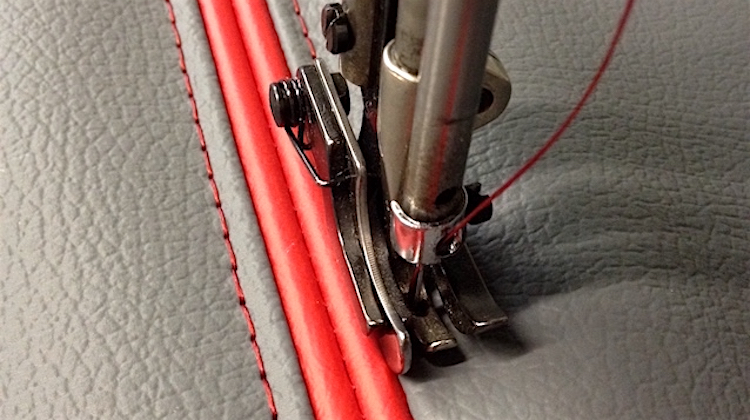
What type of machine is being used? What are the names of the different types of feet being used in each step? I noticed that they are slightly different than the others. The only one mentioned was the welt cord foot.
Btw…. Great effect! I like it! And that spring loaded guide on the walking foot of the last picture!
Consew 206rb5 is what I’m currently using and haven’t seen something like that. Very nice attachments!
Great how-to. Well laid out and easy to understand. I love the new approach to our industry, where we reach out, teach, and encourage growth and knowledge , instead of taking our trade secrets to the grave. It can only improve our automotive upholstery industry and create more qualified workers and experts to guide us to a great future. From all reports I’ve read, our industry is on the verge of a boom, and if done right, we can all benefit together.
That’s sharp looking. I’m about to do some Mustang seats and have been thinking of adding some sort of ‘wow’ factor – I think I’ve found it. Thanks for posting! Now if I only I remember to get over here and read more often….
this is beautiful. I’m going to have to give it a try
hello ! Can you tell me where I can buy this kind of foot?
This is a great presentation. I love the look of the double welt.
What type of machine is being used? What are the names of the different types of feet being used in each step? I noticed that they are slightly different than the others. The only one mentioned was the welt cord foot.
What type of machine is being used? What are the names of the different types of feet being used in each step? I noticed that they are slightly different than the others. The only one mentioned was the welt cord foot.
Also I am worried that What type of machine is being used? What are the names of the different types of feet being used in each step? I noticed that they are slightly different than the others. The only one mentioned was the welt cord foot. I need an answer quickly
The only one mentioned was the welt cord foot.
Beautiful! Thank you so much!